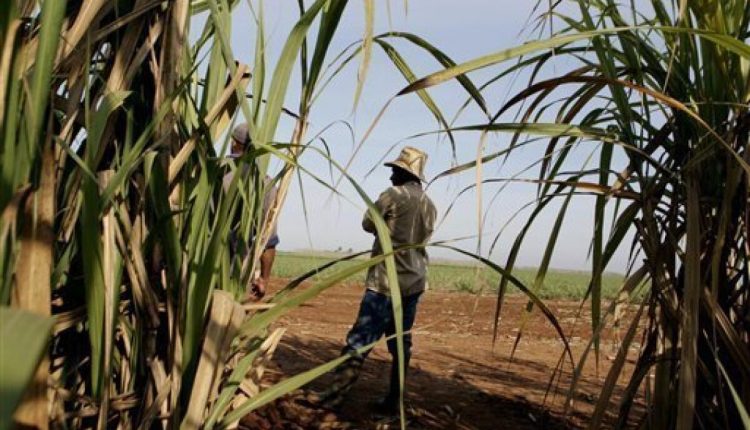
Cuba’s once massive sugar industry hits all-time low
“Without sugar, there’s no country,” the old Cuban saying goes.
From the moment Spanish colonists first planted cane in Cuba in the 16th century, sugar has been etched into this island’s soul.
For countless Africans brought here to cut it, sugar meant slavery and servitude. Later, it fuelled rebellion, when slaves wielded the machetes they used to cut sugar cane against their Spanish masters to emancipate themselves and win their nation’s sovereignty.
Sugar also brought development and luxury to Cuba.
During the “Dance of the Millions”, when the price of sugar soared after the outbreak of World War I, the local “sugarocracy”, not knowing what else to do with their dizzying profits, commissioned decadent Renaissance and Art Nouveau mansions that still line Havana’s more affluent suburbs.
But for decades, the industry has been in decline. While the island regularly produced more than 7 million tonnes in the 1980s, last season — squeezed by new “maximum pressure” United States sanctions — it yielded only 480,000 tonnes. This year, the target is even lower as Cuba heads for its worst sugar harvest in more than a century.
“Once we were the country that exported the most sugar,” Dionis Perez, director of communications at Azcuba, the state agency that regulates sugar production, told Al Jazeera.
But “this is the first year that Cuba doesn’t plan to export more sugar than it consumes”.
The men of the Yumuri sugar co-operative in Cuba have worked the cane fields around the city of Cienfuegos since they were old enough to wield a machete.
Cutting cane is all Miguel Guzmán has ever known. He comes from a family of farmhands and started the tough, thankless work as a teenager.
For hundreds of years, sugar was the mainstay of the Cuban economy. It was not just the island’s main export but also the cornerstone of another national industry, rum.
Older Cubans remember when the island was essentially built on the backs of families like Mr Guzmán’s.
Today, though, he readily admits he has never seen the sugar industry as broken and depressed as it is now – not even when the Soviet Union’s lucrative sugar quotas dried up after the Cold War.
Spiralling inflation, shortages of basic goods and the decades-long US economic embargo have made for a dire economic outlook across the board in Cuba. But things are particularly bleak in the sugar trade.
“There’s not enough trucks and the fuel shortages mean sometimes several days pass before we can work,” says Miguel, waiting in a tiny patch of shade for the Soviet-era lorries to arrive.
The lost hours of harvest as men and machinery lie idle have acutely hurt production levels.
Last season, Cuba’s production fell to just 350,000 tonnes of raw sugar, an all-time low for the country, and well below the 1.3 million tonnes recorded in 2019.
Miguel is one of the fastest cutters in his team – or pelotón – recognised by his bosses as among the most efficient in the country. Yet he says he receives no financial incentive for greater production beyond his love of the trade.
“My wages barely buy anything anymore,” he says with no hint of exaggeration over the worsening inflation in the country. “But what can we do? Cuba needs the sugar.”
It certainly does: Cuba now imports sugar to meet domestic demand – once unthinkable, and a far cry from the glory years when Cuban sugar was the envy of the Caribbean and exported around the world.
Inside Ciudad Caracas, a 19th-Century sugar mill near Cienfuegos, the air is thick with the overpowering smell of molasses.
As obsolete, rusting cogs grind tonnes of sugarcane into pulp and juice, the workers tell me it is one of just two dozen working sugar mills in Cuba.
“That’s four more than originally planned for this season, thanks to the hard work and effort of the workers,” says Dionis Pérez, communications director of the state-run sugar company, Azcuba. “But the other 29 are at a standstill,” he acknowledges.
“It’s a disaster. Today the sugar industry in Cuba almost doesn’t exist,” says Juan Triana of the Centre for Studies of the Cuban Economy in Havana.
The slump in sugar has serious implications for other parts of the Cuban economy, he argues, including on its export earnings from rum. “We’re producing the same quantity of sugar Cuba produced in the middle of the 19th Century.”
The problems have undoubtedly been worsened by the “maximum pressure” policy brought in by former US President Donald Trump. His administration ratcheted up the trade embargo on the island, a measure later extended by President Joe Biden.
But the issues facing Cuban sugar are not solely the fault of the US embargo.
Years of chronic mismanagement and underinvestment have also wrecked the once-thriving industry. Today, sugar receives less than 3% of state investment as the Cuban government backs tourism as its main economic motor instead.
Taken from St. Kitts & Nevis Observer.
Sources: Al Jazeera, BBC.


